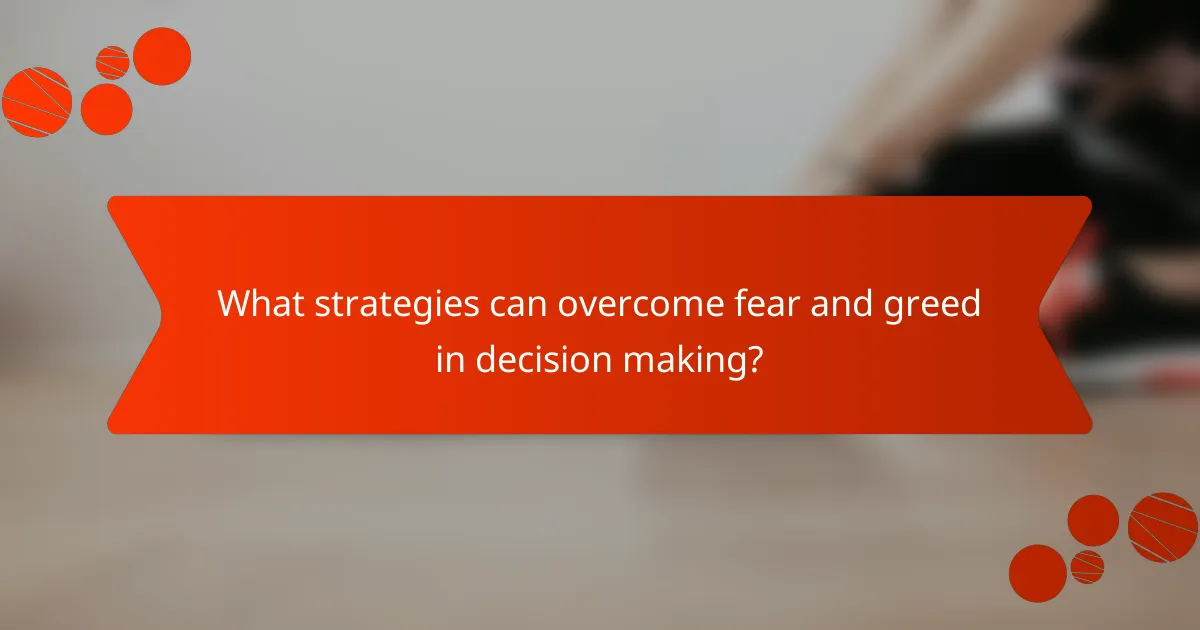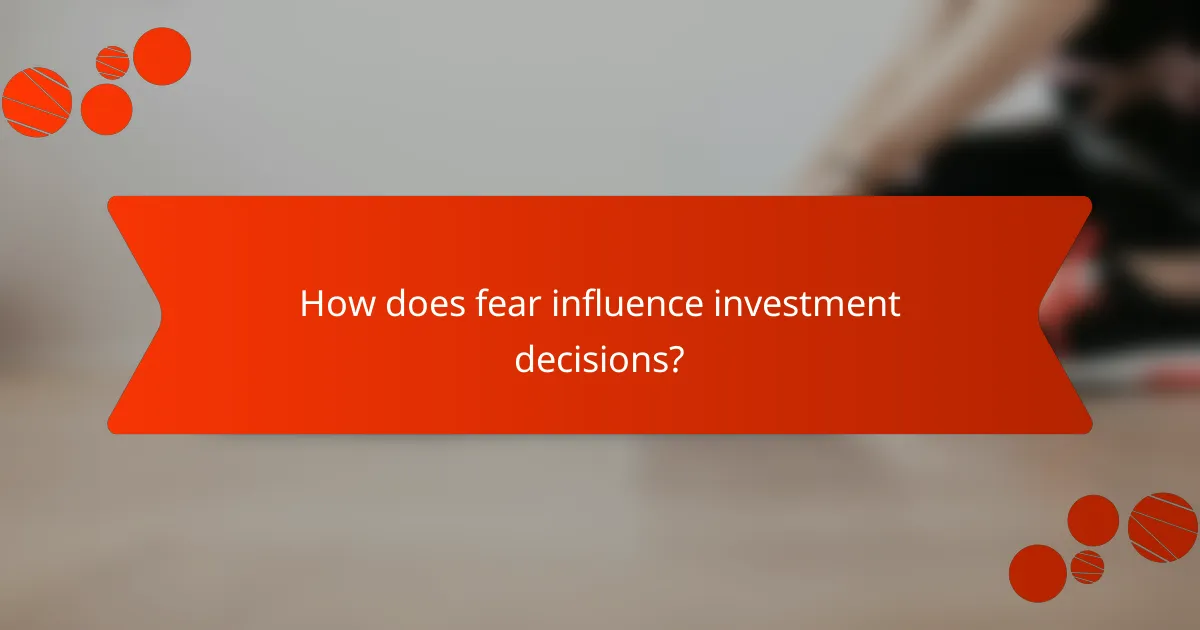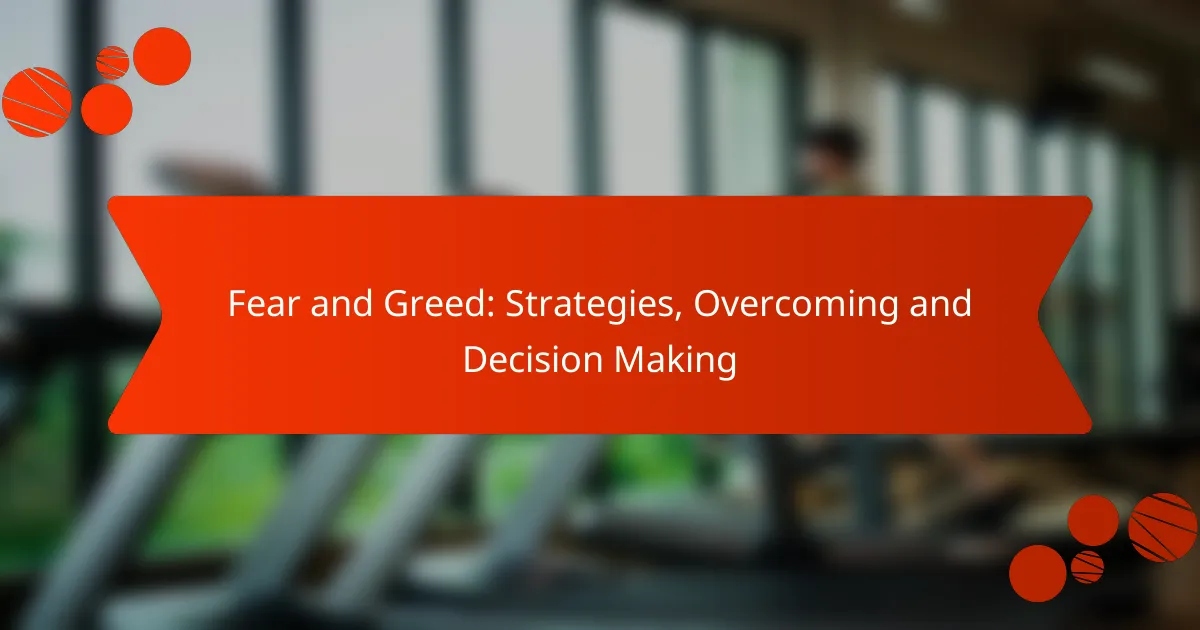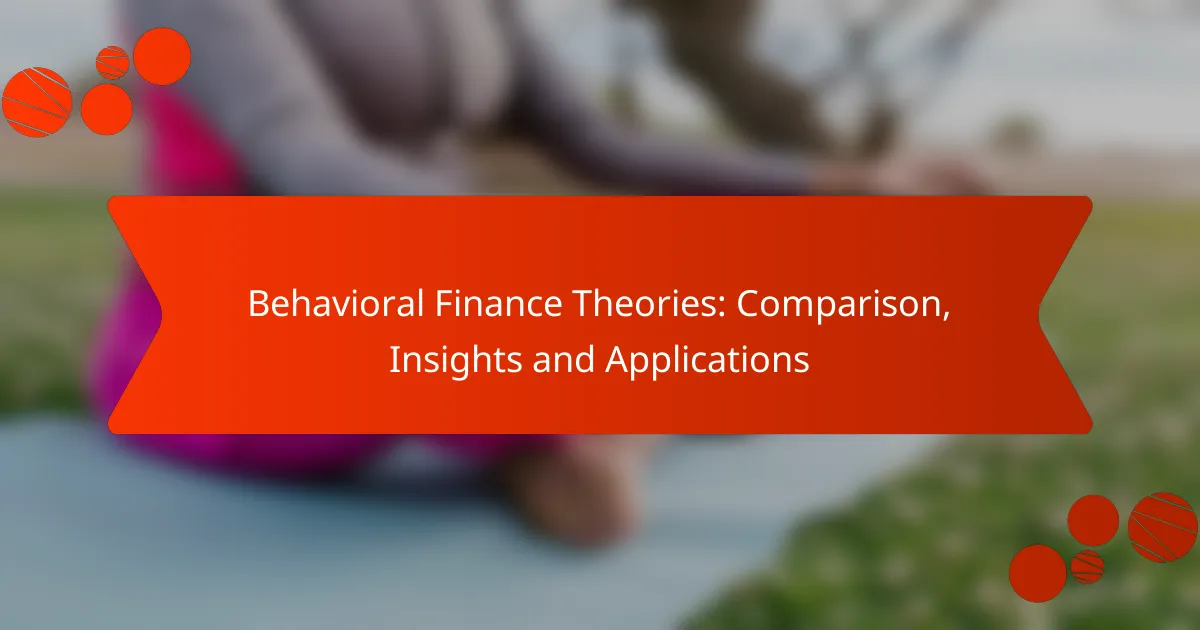Fear and greed are powerful emotions that can heavily influence decision-making, particularly in financial contexts. By understanding and addressing these emotions, individuals can implement strategies that promote rational assessment and emotional regulation, leading to more informed choices. Overcoming the pitfalls of fear and greed is essential for achieving financial stability and success.

What strategies can overcome fear and greed in decision making?
To effectively overcome fear and greed in decision making, individuals can employ various strategies that focus on rational assessment and emotional regulation. These strategies help mitigate the influence of irrational emotions, leading to more balanced and informed choices.
Risk assessment techniques
Risk assessment techniques involve identifying and evaluating potential risks associated with decisions. This can include methods like SWOT analysis (assessing strengths, weaknesses, opportunities, and threats) or scenario planning to visualize different outcomes. By systematically analyzing risks, decision-makers can reduce the impact of fear-driven choices.
For example, when considering an investment, one might evaluate market conditions, financial health, and historical performance to gauge potential risks. Establishing a clear risk tolerance level can also guide decisions, helping to balance fear and greed effectively.
Behavioral finance principles
Behavioral finance principles explain how psychological factors influence financial decisions. Understanding concepts such as loss aversion, where losses weigh heavier than gains, can help individuals recognize their biases. By acknowledging these tendencies, decision-makers can strive for more rational approaches.
For instance, setting predefined rules for buying or selling assets can counteract impulsive decisions driven by fear or greed. This disciplined approach can lead to more consistent outcomes and reduce emotional interference.
Mindfulness practices
Mindfulness practices enhance self-awareness and emotional regulation, allowing individuals to recognize when fear or greed is influencing their decisions. Techniques such as meditation, deep breathing, or journaling can help cultivate a calm mindset, promoting clearer thinking.
Incorporating mindfulness into daily routines can improve focus and reduce anxiety, making it easier to approach decisions with a balanced perspective. Regular practice can lead to better emotional control in high-stakes situations.
Data-driven decision frameworks
Data-driven decision frameworks rely on quantitative analysis to guide choices, minimizing the influence of emotions like fear and greed. Utilizing tools such as dashboards or analytics platforms can provide insights into trends and performance metrics, facilitating informed decisions.
For example, using historical data to project future performance can help investors make decisions based on facts rather than emotions. Establishing clear criteria for evaluating options can further enhance the objectivity of the decision-making process.
Emotional intelligence training
Emotional intelligence training focuses on developing skills to recognize and manage one’s emotions and those of others. This training can enhance self-awareness, empathy, and interpersonal skills, which are crucial for navigating fear and greed in decision making.
Participating in workshops or coaching sessions can provide practical tools for improving emotional intelligence. Techniques such as active listening and constructive feedback can foster better communication and collaboration, leading to more balanced decisions in group settings.

How does fear influence investment decisions?
Fear significantly impacts investment decisions by causing individuals to become overly cautious, often leading to missed opportunities or hasty sell-offs. Investors may react emotionally to market downturns, which can skew their judgment and lead to suboptimal financial choices.
Impact on risk tolerance
Fear can lower an investor’s risk tolerance, making them reluctant to engage in potentially rewarding investments. When market volatility increases, many individuals prefer safer assets, such as bonds or cash equivalents, even if these options yield lower returns.
This shift in risk tolerance can lead to a conservative portfolio that may not keep pace with inflation or market growth. Investors should regularly assess their risk appetite and adjust their strategies accordingly to avoid long-term financial stagnation.
Behavioral biases in trading
Fear often triggers behavioral biases, such as loss aversion, where the pain of losing money outweighs the pleasure of gaining it. This bias can result in irrational decision-making, such as holding onto losing investments in hopes of recovery while selling winning stocks prematurely.
To counteract these biases, investors should establish clear investment goals and stick to a disciplined strategy. Utilizing tools like stop-loss orders can help mitigate emotional reactions and maintain a more rational approach to trading.

What role does greed play in financial choices?
Greed significantly influences financial decisions by driving individuals to pursue excessive gains, often leading to risky behaviors. This desire for more can cloud judgment and result in poor investment choices, ultimately affecting financial stability.
Overtrading tendencies
Greed can lead to overtrading, where investors make excessive trades in hopes of maximizing profits. This behavior often incurs higher transaction costs and can diminish overall returns. Investors should be cautious and establish clear trading plans to avoid impulsive decisions driven by greed.
To mitigate overtrading, consider setting limits on the number of trades per week or month. Regularly reviewing your trading strategy can help maintain discipline and focus on long-term goals rather than short-term gains.
Chasing high returns
Chasing high returns is a common pitfall fueled by greed, where investors pursue assets promising extraordinary profits without adequate research. This often leads to investing in volatile markets or speculative assets, increasing the risk of significant losses.
To avoid this trap, focus on a diversified portfolio that balances risk and return. Establish realistic return expectations based on historical performance and market conditions, rather than succumbing to the allure of quick profits.

How can one develop a balanced investment strategy?
To develop a balanced investment strategy, one must blend various asset classes to manage risk while aiming for returns. This involves understanding personal risk tolerance, investment goals, and market conditions to create a diversified portfolio that can withstand market fluctuations.
Diversification techniques
Diversification techniques involve spreading investments across different asset classes, such as stocks, bonds, and real estate, to reduce risk. A common approach is to allocate a percentage of the portfolio to each asset class based on risk tolerance; for example, a conservative investor might allocate 60% to bonds and 40% to stocks.
Investors can also diversify within asset classes by including various sectors or geographic regions. For instance, investing in both domestic and international stocks can help mitigate risks associated with economic downturns in a single country.
Long-term vs short-term focus
A long-term investment focus typically aims for growth over several years, allowing for the compounding of returns. This strategy often involves holding investments through market volatility, which can lead to higher returns over time, especially in equities.
In contrast, a short-term focus seeks to capitalize on immediate market movements, which can be riskier and requires more active management. Investors should consider their financial goals and risk tolerance when deciding between these approaches, as a balanced strategy may incorporate both long-term and short-term investments to optimize returns while managing risk.

What frameworks support effective decision making?
Effective decision making can be supported by various frameworks that help individuals and organizations analyze options and outcomes. These frameworks provide structured approaches to evaluate risks and benefits, ultimately guiding more informed choices.
SWOT analysis for investors
SWOT analysis is a strategic planning tool that assesses the Strengths, Weaknesses, Opportunities, and Threats related to an investment. Investors can use this framework to identify internal strengths, such as a strong financial position, and weaknesses, like limited market presence.
Opportunities might include emerging markets or new technologies, while threats could involve economic downturns or increased competition. By systematically evaluating these factors, investors can make more informed decisions about where to allocate their resources.
Pros and cons evaluation
Pros and cons evaluation involves listing the advantages and disadvantages of a decision to clarify its potential impact. This simple yet effective method helps individuals weigh the benefits, such as high returns or strategic alignment, against drawbacks like risks or costs.
To conduct a pros and cons evaluation, create a two-column list. For example, if considering a new investment, list potential high returns and market growth as pros, while noting risks and liquidity issues as cons. This visual representation can simplify complex decisions and highlight the most critical factors to consider.

What are the psychological barriers to overcoming fear and greed?
The psychological barriers to overcoming fear and greed primarily involve cognitive dissonance and loss aversion. These concepts explain how conflicting beliefs and the fear of losing what one has can hinder effective decision-making in various situations.
Cognitive dissonance
Cognitive dissonance occurs when individuals hold two or more contradictory beliefs or values, leading to discomfort. This discomfort often results in irrational decision-making as people seek to resolve the dissonance by justifying their choices, even if those choices are not optimal.
For example, an investor who believes in a stock’s potential but sees it declining may experience cognitive dissonance. To alleviate this, they might convince themselves that the decline is temporary, which could lead to holding onto a losing investment longer than advisable.
Loss aversion
Loss aversion refers to the tendency to prefer avoiding losses over acquiring equivalent gains. This psychological barrier can lead individuals to make overly conservative decisions, often resulting in missed opportunities for profit.
For instance, a trader might avoid selling a stock that has dropped in value, fearing the realization of a loss, even when market indicators suggest it would be wise to cut losses. Understanding this bias can help individuals recognize when their fear of loss is clouding their judgment and preventing rational decision-making.

How can technology aid in managing fear and greed?
Technology can significantly help individuals manage fear and greed by providing data-driven insights and automated decision-making tools. These resources can enhance emotional regulation and promote rational choices in high-stakes environments.
Data analytics and decision-making tools
Data analytics tools can help individuals and organizations make informed decisions by analyzing market trends and consumer behavior. By utilizing algorithms that process vast amounts of information, users can identify patterns that may indicate fear-driven sell-offs or greed-fueled buying sprees.
For example, platforms that offer real-time analytics can alert investors to unusual market movements, allowing them to react calmly rather than impulsively. This proactive approach helps mitigate the emotional responses associated with fear and greed.
Automated trading systems
Automated trading systems can execute trades based on predefined criteria, reducing the influence of emotional decision-making. These systems can be programmed to follow specific strategies, such as buying when prices drop below a certain threshold or selling when they exceed a set limit.
By relying on these systems, traders can avoid the pitfalls of emotional trading, such as panic selling during downturns or overenthusiastic buying during market rallies. This structured approach encourages discipline and consistency.
Behavioral finance apps
Behavioral finance apps can help users track their emotional responses to market changes and provide insights into their decision-making patterns. These applications often include features like mood tracking and journaling, allowing users to reflect on their feelings and how they influence their financial choices.
By becoming more aware of their emotional triggers, individuals can develop strategies to counteract fear and greed. For instance, setting specific investment goals and regularly reviewing them can help maintain focus and reduce impulsive behavior.



